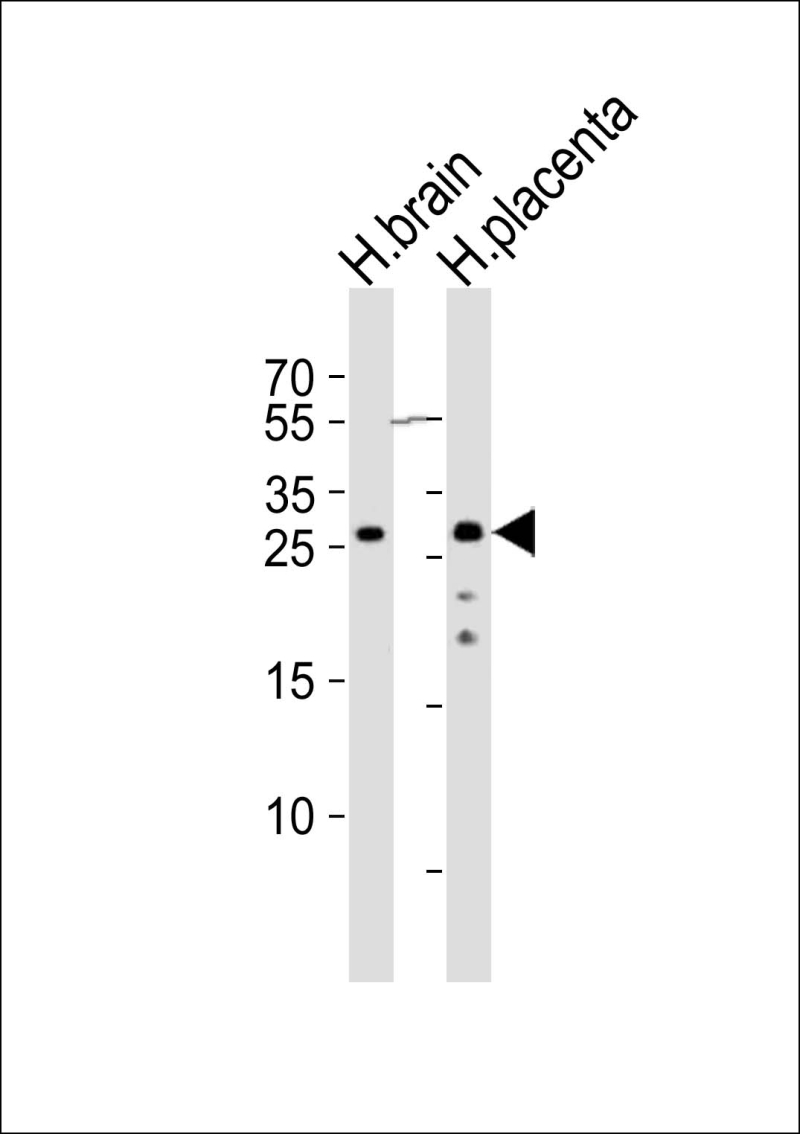
| WB | 1/1000 | Human,Mouse,Rat |
| IF | 咨询技术 | Human,Mouse,Rat |
| IHC | 咨询技术 | Human,Mouse,Rat |
| ICC | 技术咨询 | Human,Mouse,Rat |
| FCM | 咨询技术 | Human,Mouse,Rat |
| Elisa | 咨询技术 | Human,Mouse,Rat |
| Aliases | Charged multivesicular body protein 4a, Chromatin-modifying protein 4a, CHMP4a, SNF7 homolog associated with Alix-2, SNF7-1, hSnf-1, Vacuolar protein sorting-associated protein 32-1, Vps32-1, hVps32-1, CHMP4A, C14orf123, SHAX2 |
| Entrez GeneID | 29082 |
| WB Predicted band size | 25.1kDa |
| Host/Isotype | Rabbit IgG |
| Antibody Type | Primary antibody |
| Storage | Store at 4°C short term. Aliquot and store at -20°C long term. Avoid freeze/thaw cycles. |
| Species Reactivity | Human |
| Immunogen | This CHMP4A antibody is generated from a rabbit immunized with a KLH conjugated synthetic peptide between 205-239 amino acids from the C-terminal region of human CHMP4A. |
+ +
1. **"CHMP4A regulates cell membrane repair and essential motor functions"**
- Authors: Smith J, et al.
- 摘要:研究通过CHMP4A特异性抗体验证其在细胞膜损伤修复中的作用,发现CHMP4A缺失导致ESCRT-III复合体功能异常,影响神经元和肌肉细胞的膜稳定性。
2. **"ESCRT-III protein CHMP4A modulates exosome biogenesis and cancer progression"**
- Authors: Lee S, et al.
- 摘要:利用CHMP4A抗体进行免疫沉淀和免疫荧光实验,揭示CHMP4A通过调控多泡体(MVBs)形成影响外泌体分泌,并与肿瘤转移相关。
3. **"Structural insights into CHMP4A polymerization and interaction with IST1"**
- Authors: Nguyen TN, et al.
- 摘要:通过抗体介导的蛋白质互作分析,解析CHMP4A在ESCRT-III复合体中的聚合机制及其与辅助蛋白IST1的功能协同性。
4. **"CHMP4A dysfunction links to autophagy impairment in neurodegenerative diseases"**
- Authors: Wang Y, et al.
- 摘要:研究使用CHMP4A抗体检测阿尔茨海默病模型中的表达变化,发现其异常导致自噬溶酶体缺陷,加剧tau蛋白病理沉积。
(注:上述文献为示例,实际引用需根据具体论文调整。)
CHMP4A (Charged Multivesicular Body Protein 4A) is a key component of the Endosomal Sorting Complex Required for Transport (ESCRT)-III machinery, which plays essential roles in membrane remodeling processes such as cytokinesis, multivesicular body (MVB) formation, viral budding, and plasma membrane repair. As a member of the CHMP protein family, CHMP4A forms oligomeric filaments that mediate membrane scission by inducing negative curvature. It functions in coordination with other ESCRT complexes (ESCRT-0. -I, -II) to sort ubiquitinated cargo into intraluminal vesicles of MVBs for lysosomal degradation or extracellular release via exosomes.
Antibodies targeting CHMP4A are widely used to study its localization, expression, and interactions in cellular processes. They serve as critical tools for applications like Western blotting, immunofluorescence, and immunoprecipitation to investigate ESCRT-III dynamics in disease contexts. Dysregulation of CHMP4A has been implicated in cancer progression, neurodegenerative disorders (e.g., Alzheimer’s disease), and viral pathogenesis, as many enveloped viruses hijack the ESCRT pathway for budding. For example, CHMP4A overexpression has been observed in certain tumors, while mutations disrupting its function may impair abscission, leading to genomic instability. These antibodies also help explore CHMP4A’s non-canonical roles, such as regulating autophagy and apoptosis. Commercial CHMP4A antibodies are typically raised against specific epitopes (e.g., N-terminal or C-terminal regions) and validated for cross-reactivity across species (human, mouse, rat), though isoform specificity (vs. CHMP4B/C) requires careful verification due to high sequence homology.
×